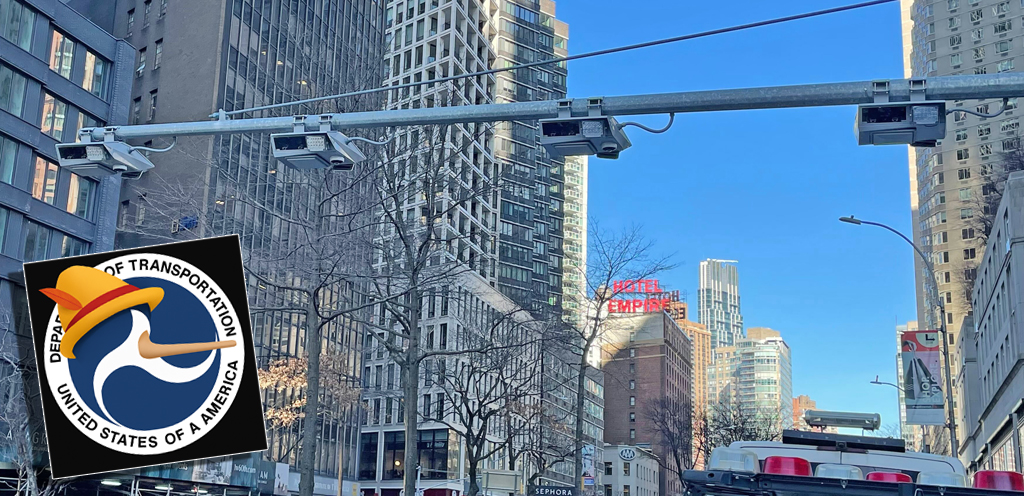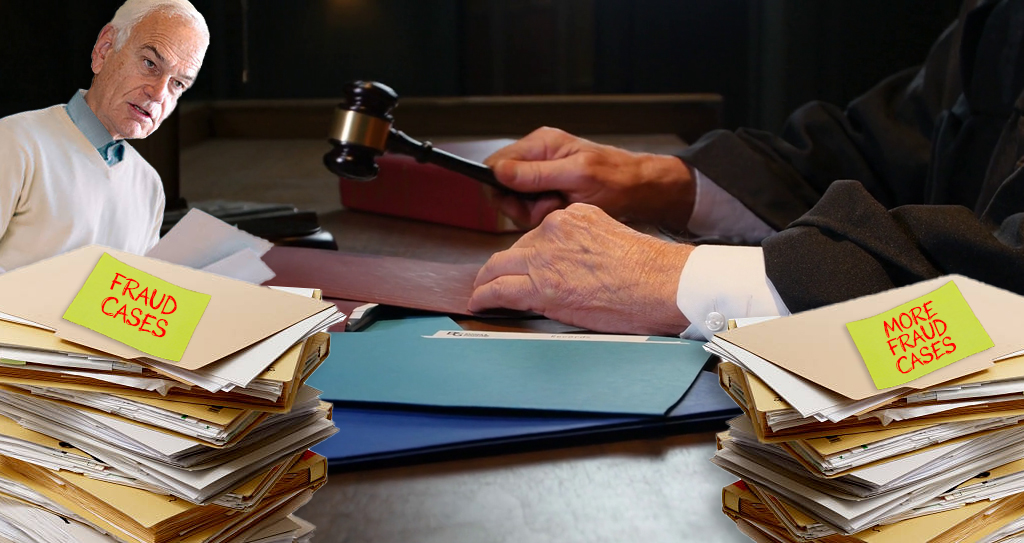If at first you don't succeed, lie, lie again.
Never-before-released internal communications between federal and New York State transportation officials reveal that U.S. Transportation Sec. Sean Duffy's central legal case against congestion pricing was never raised when the first Trump administration was deciding on the program.
Duffy claims that congestion pricing violates federal law because it does not offer drivers a toll-free path into Manhattan's Central Business District. But in 2019 and 2020, memos between New York State and the Federal Highway Administration — obtained by Streetsblog via a freedom of information law request — show that the feds never demanded a free roadway option as a hurdle for getting approval for the tolls.
And regardless of what Duffy argues, the Value Pricing Pilot Program, the federal tolling program under which congestion pricing was authorized, does not have a provision requiring a toll-free route — which may explain why Trump's first term DOT did not ask for one as part of its congestion pricing review, according to the communications.
In an October 2019 letter to Ron Epstein, then the executive deputy commissioner of New York State DOT, Trump's Federal Highway Administrator Nicole Nason called the VPPP "the best potential fit" for the congestion relief toll. On toll's legality, Nason merely asked that New York State demonstrate that it would maintain the quality of streets in the tolled area south of 60th Street, since most of the money raised would go to mass transit.
"The VPPP requires maintenance of the infrastructure that is subject to the tolling allowed by the program," Nason wrote. "The FHWA therefore requests further information regarding the planned use of revenues and a certification that the highway and street infrastructure and traffic control devices within the proposed pricing area will be maintained adequately."
In response, state DOT emphasized that New York City and state planned to spend plenty of money — billions, in fact* — on roads in lower Manhattan.
Nason still tried to throw roadblocks in front of the toll, which her boss Donald Trump has consistently opposed, but not by claiming that a free route must be provided.
For example, in a 2020 letter also obtained by Streetsblog, Nason said the FHWA was preventing the program from moving forward until traffic congestion returned to pre-pandemic levels (which it did by 2022). As in 2019, Nason did not ask for a free route for driving into the city.
Reached for comment, Epstein, who left state DOT in 2022, confirmed that no one from FHWA ever said congestion pricing would have to include an untolled route for CBD-bound drivers.
"The issue of a free roadway or free access was not raised," he told Streetsblog.
Epstein, who now runs the New York Construction Materials Association, declined to comment on Duffy's interpretation of federal law. But one attorney who is suing Duffy said that federal agencies can't just change their minds about set policy decisions.
"In administrative law, you're not supposed to just reopen questions based on things that could have been raised at the time," said Dror Ladin, an attorney with Earthjustice who's representing the Riders Alliance and the Sierra Club in the MTA's suit against Duffy's bid to revoke federal approval for congestion pricing.
Legal experts have torn into Duffy's rationale for trying to end congestion pricing. Federal law passed by Congress and President Obama specifically allowed for the toll, Constitutional law professor Roderick Hills Jr. said after Duffy demanded that the MTA end the program.
Even if Duffy was raising legitimate legal questions, Ladin said that immediately pulling the plug on the program is not how these things are supposed to work.
"If you really had some concern about there being one toll-free access route, there would be something in the letter about trying to figure out a solution where they would create this invented requirement," said Ladin. "You could see them saying, 'Let's work on trying to bring this within the realm of what we think the law is,' rather than just saying, you know, 'Terminate the program.'"
In late March, Duffy demanded that the MTA end congestion pricing by April 20. But the federal government has not explained what it would do to enforce that legally dubious deadline, and lawyers for the U.S. DOT did not ask for a restraining order to stop the toll.
Indeed, the latest deadline came and went over the weekend, and the tolling cameras remained on.
* Readers have asked about the use of "billions" here, but that number comes from the state DOT's response to the earlier Trump letter. Here is a portion of that response (it is not online so we cannot link to it): "As part of a long and demonstrated commitment by the region to maintain the highway network, New York State Department of Transportation and New York City Department of Transportation have a history of significantly overmatching available and forecasted federal-aid resources for renewing and modernizing roads and bridges. In September 2019, the New York Metropolitan Transportation Council, the Metropolitan Planning Organization for the ten-county region, inclusive of New York City, adopted a $22-billion fiscally constrained Transportation Improvement Program covering the period of 2020 through 2024 of which approximately 50 percent is federally aided. In addition, during this period, the state and city plan to commit more than $2 billion in 100 percent non-federal funds outside of the TIP to operate and maintain the road and bridge infrastructure in the CBD."






